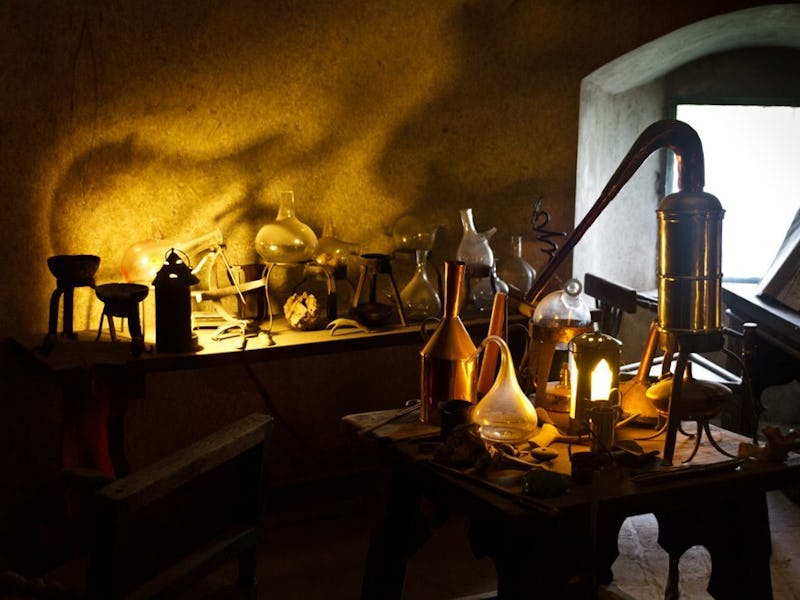Modern-Day Alchemists Made Silver That's Identical to Gold
Chemists created silver particles that are indistinguishable from their golden counterparts.

Succeeding where their medieval forebears failed, a team of chemists have just achieved the alchemist’s goal of turning silver to gold.
In their paper, published last week in the Journal of the American Chemical Society, the researchers from King Abdullah University of Science and Technology report that they successfully synthesized a silver nanoparticle that’s virtually a perfect analog for its gold counterpart.
On its surface, the nanoparticle — imagine a cluster of silver atoms surrounded by a network of other molecules — appears yellowish, just like gold. The similarities don’t stop there: The nanocluster also shares its chemical properties —including number of metal atoms, superatomic electronic configuration, and atomic arrangement, with its golden analog.
But it’s the nanocluster as a whole that has so much in common with its golden counterpart. The researchers didn’t change the atomic structure of the individual silver and gold atoms. Doing that would involve changing the number of protons — positively charged particles — an atom has, which, chemically speaking, is what defines silver as silver and gold as gold.
The “Golden” Silver Nanoparticle
The nanocluster contains 25 silver atoms together with 18 thiolate molecules, arranged loosely in a star shape. The researchers discovered that if you switch those silver atoms out for gold ones, the resulting arrangement of atoms and electrons — which dictate color and overall structure — would be exactly the same.
While silver nanoparticles have been around for years, it’s the first time a particle with a golden counterpart has been synthesized. If this is possible, then in theory, there’s no reason other precious metal analog pairs can’t be created either.
Lead author Osman M. Bakr is aware of the historical significance of his work, but prefers to keep things future-facing. “In some aspects, this is very similar to alchemy,” he said in an interview with Phys.org, “but we call it ‘nano-alchemy.’”